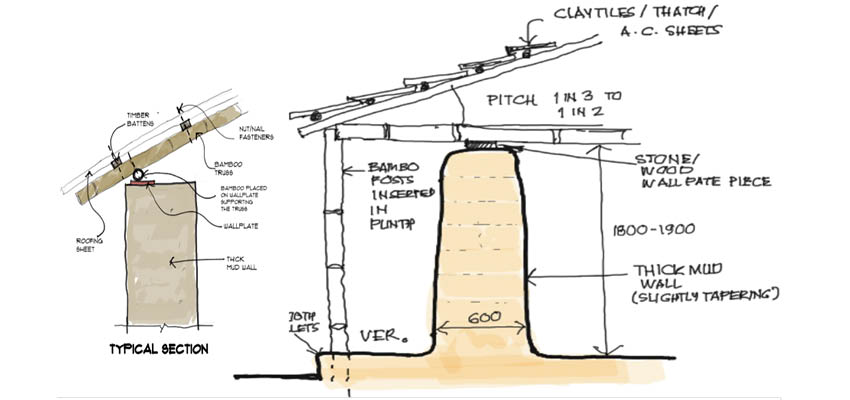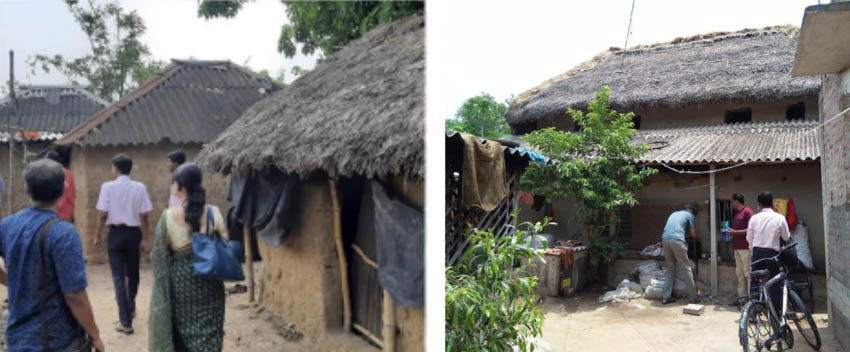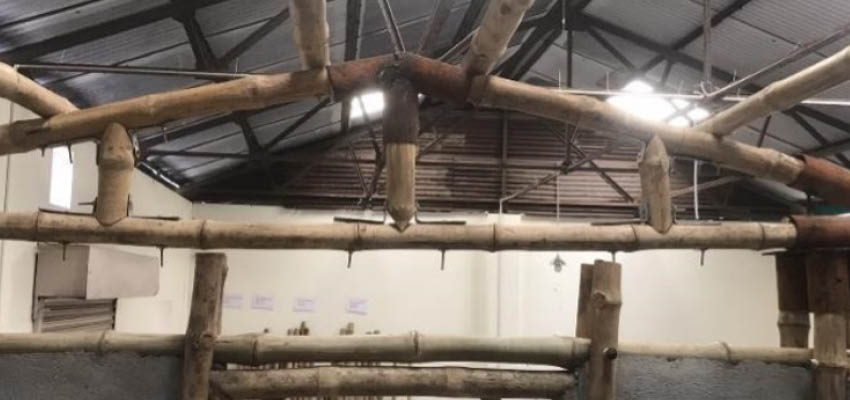
Improving the livability of bamboo houses in Eastern India’s periurban and rural areas: MIT D-Lab students collaborate with Indian Institute of Technology Kharagpur to design affordable, robust weather-resilient bamboo roofs for traditional homes.
MIT D-Lab Class
Student team
MIT students unless otherwise noted.
- Brandon Worrell ‘24, Mechanical Engineering
- Brandon is a senior Mechanical Engineering student at MIT. He hopes to work in the field of product engineering and design.
- Ashley Yang ‘26, Wellesley College, Economics and Data Science. Ashley is a 2nd-year Data science and Economics student at Wellesley, focusing on Development Economics and Public Policy.
- Hien Le ‘24, Harvard University, Sociology
- Nima Hyolmo ‘24, Mechanical Engineering and Computer Science. Nima is a senior with an interest in the intersection of mechanical engineering and Computer Science. He currently focuses on robotics and control systems.
- Eileen Zhang ‘25, Mechanical Engineering & Management. Eileen is a 3rd-year mechanical engineering student at MIT with a passion for user-centered design, student entrepreneurship, and sustainable engineering.
Community partners
- Indian Institute of Technology Kharagpur, Architecture & Regional Planning Department
- Professor Haimanti Banerji
- Professor Subrata Chattopadhyay
- Ministry of Housing and Urban Affairs
- Pradhan Mantri Awas Yojana-Urban
Location
West Bengal, India & Chennai, India
Problem
West Bengal is a climatically vulnerable state in India facing an increase in flood risk, storms, and temperature. Existing housing infrastructure, particularly roofs, may not provide sufficient protection and liveability as climate change challenges become more prevalent. Existing thatched roofs need to be replaced often, and many other bamboo roofing options are expensive. The current proposed option in place is galvanized metal roofs, which is the most cost-effective; however, they are prone to rust, corrosion, and leaks. They also do not have good insulation nor energy efficiency. A more sustainable and durable roofing solution is needed to bridge these gaps.
Cultural context
A state in eastern India, West Bengal has access to an abundant source of bamboo, because 45% of the world’s bamboo forests belong to India, and two-thirds of this growing stock is found in its Northeastern states (Tewari et al., 2019). Bamboo is fundamental in the lives of the people there, integrated into their long-standing cultural, social and economic traditions (Das et al., 2012). Other than natural forests, bamboo is cultivated in people’s home groves and private plantations for its wide-range utility, from fencing to agricultural functions and basketry (Das et al, 2012). Additionally, given how this region is prone to natural disasters such as flooding, local communities have embraced traditional housing techniques that have proved to be resilient against natural calamities (Das et al, 2012). Central to these housing techniques is the use of light-weight materials such as bamboo, ikra (a locally available reed) and wood which lend themselves efficiently to earthquake coping (Das et al, 2012).

Theory of change
We hope that by developing affordable and more durable roofing from sustainable bamboo materials, we can reduce deforestation, offer an alternative to expensive industrial construction products, and help people safely live in places that may be affected by climate change.
Proposed solution
We plan on identifying and collaborating with one local community in West Bengal to assess their climate change challenges and requirements for disaster-resilient housing infrastructures. After conducting appropriate research, we will create and iterate one possible design for a bamboo roof. Further extending upon IIT Kharagpur’s existing work, we plan to use treated bamboo culms in order to form bamboo shingles or roofing sheets. This may be more cost-effective than existing solutions by avoiding the use of expensive, pressure-treated materials. However, with bamboo culms, we need to refine techniques used to join the bamboo roofing to the walls. This may also require the addition of bamboo gutters for the purposes of collecting rainwater, depending on the needs of the house. We need to test our roof design by making sure that the roof is mold, rot, and pest-resistant. Structurally, the roof must be robust, undergoing wind testing to withstand strong winds, rain testing to ensure that it is watertight, and thermal testing to ensure that the house is comfortable to live in. Most importantly, one roof prototype can be deployed in the community to assess how individuals interact with the design and whether or not they can benefit from it.

Next steps
We aim to work with Professor Haimanti and Professor Subrata to identify more local communities who may benefit from affordable, durable bamboo roofs. We will continue to assess existing roofing technologies and investigate local communities’ unique housing needs, climate challenges, and social/cultural systems. Based on what we learn and the feedback that we receive, we will iterate on the initial bamboo roof design so that it can be adapted to different types of traditional houses in India, improving the liveability of traditional homes in other climate regions of India. Furthermore, since this is MIT DLAB’s first collaboration with the Indian Institute of Technology at Kharagpur, we will help investigate future project areas that students may participate in.
References
- Das, Navanita, Shulanki Pal, Spondan Sapon Bora and Onenjungla Walling. 2005. “Study of Traditional Houses in Assam.” Journal of Civil Engineering and Environmental Technology 1(4): 53-58.
- Das, Puspanjali Korde Chaaruchandra, Puspanjali Das, and S. Satya. 2012. “Traditional Bamboo Houses of North-Eastern Region: A Field Study of Assam & Mizoram.” Key Engineering Materials 517: 197–202. https://doi.org/10.4028/www.scientific.net/KEM.517.197.
- Tewari, Salil & Negi, Harshita & Kaushal, R.. (2019). “Status of Bamboo in India.” International Journal of Economic Plants 6(1): 197-202.
Contact
Libby Hsu, Lecturer; MIT D-Lab Associate Director of Academics

